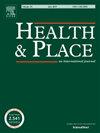谁的污染,谁的问题?了解内罗毕学校对空气污染的看法和清洁烹饪(对健康)的影响。
IF 4.1
2区 医学
Q1 PUBLIC, ENVIRONMENTAL & OCCUPATIONAL HEALTH
引用次数: 0
摘要
空气污染是全球公共卫生和环境方面的一个重大问题,每年导致 670 多万人过早死亡,对中低收入国家的影响尤为严重,这些国家仍然普遍使用污染性燃料做饭。有人认为,纳入对空气污染的看法对于制定有效的干预战略至关重要。然而,在制定清洁烹饪干预措施时,这一点却很少得到重视。肯尼亚学校普遍使用木柴,而在学校环境中过渡到清洁烹饪方法正受到国际关注。我们调查了肯尼亚内罗毕非正规居住区的三所学校的教职员工是如何看待和理解空气污染的,这些学校主要使用木柴或木炭作为学校膳食。我们进行了焦点小组讨论和深入访谈,并采用主题分析法探讨了学校对空气污染的看法以及不同教职员工群体对空气污染的不同看法。对空气污染的看法主要受周围非正规居住区的外部环境因素影响。虽然人们认识到木柴造成的空气污染对餐饮员工和教学活动的影响,但对长期健康影响的理解往往模糊不清,与学校环境脱节。据说解决空气污染问题的责任在于外部利益相关者,但学校教职员工指出,政府缺乏干预措施来解决潜在的贫困和多种污染源问题。解决空气污染问题的有效战略必须包括与利益相关者和社区成员的认真接触,以纳入当地人对空气污染的看法,并解决增加空气污染的更广泛的系统性问题。由于相互竞争的资金需求以及解决这一问题的责任转嫁倾向,仅以减少空气污染为重点的清洁烹饪干预措施可能会面临挑战。更广泛的利益,如经济和环境的改善,可能是成功实施的更大动力。本文章由计算机程序翻译,如有差异,请以英文原文为准。
Whose pollution, whose problem? Understanding perceptions of air pollution and implications for clean cooking (for health) in Nairobi schools
Air pollution is a critical global public health and environmental concern, leading to over 6.7 million premature deaths annually, disproportionately affecting low- and middle-income countries (LMICs), where the use of polluting fuels for cooking remains widespread. Incorporating perceptions of air pollution is argued as vital for developing effective intervention strategies. However, this has seldom been given focus in the development of clean cooking interventions. The use of firewood in Kenyan schools is commonplace and the transition to clean cooking methods in school settings is gaining international attention. We investigated how air pollution is perceived and understood by staff in three schools from an informal settlement in Nairobi, Kenya which predominately use firewood or charcoal for school catering. We conducted focus group discussions and in-depth interviews and used thematic analysis to explore perceptions of air pollution in the schools and how these differed between different staff groups.
Perceptions of air pollution were dominated by external environmental factors from the surrounding informal settlement. While the impacts of air pollution from firewood on catering staff and teaching activities were recognised, understandings of the long-term health impacts were often blurred and dislocated from the school setting. Responsibilities for addressing air pollution were said to be with external stakeholders, but the school staff cited a lack of government interventions to address underlying poverty and multiple pollution sources. Effective strategies to tackle air pollution must involve careful engagement with stakeholders and community members to incorporate local perceptions of air pollution and address broader systemic issues that increase exposure. Clean cooking interventions focused solely on reducing air pollution may face challenges due to competing financial demands and a tendency to shift responsibilities for tackling such an issue. Broader benefits, such as economic and environmental improvements, might be more compelling drivers for successful implementation.
求助全文
通过发布文献求助,成功后即可免费获取论文全文。
去求助
来源期刊

Health & Place
PUBLIC, ENVIRONMENTAL & OCCUPATIONAL HEALTH-
CiteScore
7.70
自引率
6.20%
发文量
176
审稿时长
29 days
期刊介绍:
he journal is an interdisciplinary journal dedicated to the study of all aspects of health and health care in which place or location matters.
 求助内容:
求助内容: 应助结果提醒方式:
应助结果提醒方式:


